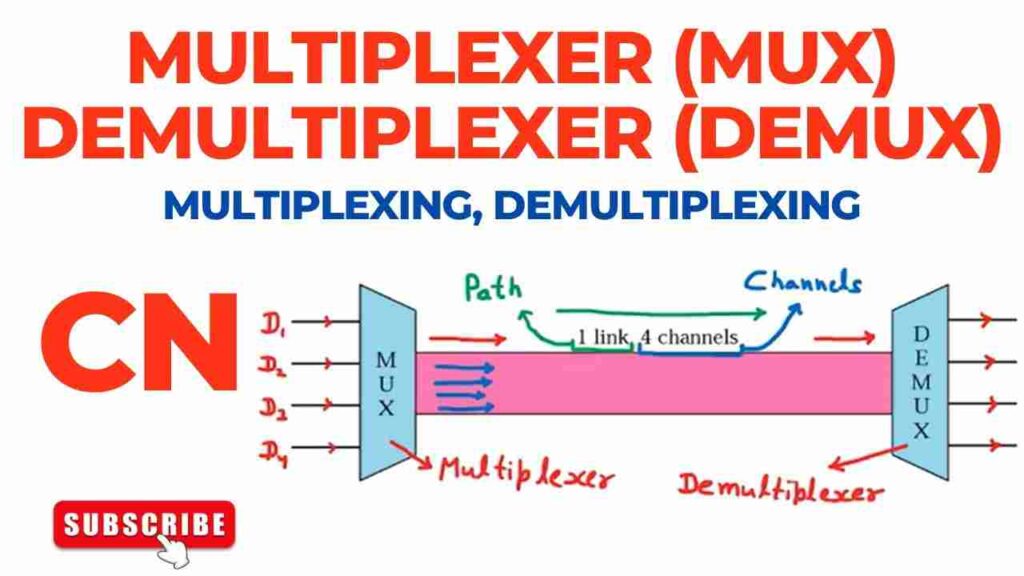
Explore 15 Key Difference between Multiplexer and Demultiplexer
A multiplexer (MUX) and a demultiplexer (DEMUX) are two important components in digital electronics that are used to route and control the flow of digital signals. While they may seem similar in some ways, there are several key differences between them. Here are 15 simplified explanations of the difference between a multiplexer and a demultiplexer in simpler terms for your upcoming exams:
Difference between Multiplexer and Demultiplexer
A demultiplexer does the opposite, taking a single input and routing it to one of several outputs, whereas a multiplexer combines multiple input signals into a single output.
A demultiplexer has one input line and multiple output lines, whereas a multiplexer has many input lines and only one output line.
Signal Flow: A multiplexer uses control lines to select which of the input signals should be transmitted to the output. Based on the control lines, a demultiplexer routes the input signal to one of the output lines.
Data Distribution: A demultiplexer is used to distribute data from a single source to multiple destinations, whereas a multiplexer is used to transmit data from multiple sources to a single destination.
Complexity: Due to the additional circuitry required to select and combine the input signals, multiplexers are typically more complex than demultiplexers.
Size: Multiplexers typically have more input lines than demultiplexers because of their different functions.
Application: To transmit multiple data streams over a single channel in communication systems, multiplexers are frequently used. In receiving systems, demultiplexers are frequently used to divide and distribute the transmitted data.
Multiplexers and demultiplexers carry out inverse operations on one another. Signals are combined by a multiplexer and separated by a demultiplexer.
Data Compression: By combining several signals into a single transmission, multiplexers can compress data. Demultiplexers then divide the signals to decompress the data.
Control Lines: Demultiplexers need control lines to direct the input signal to the proper output line, whereas multiplexers need control lines to choose the desired input signal.
Circuit Design: Multiplexers use more complicated circuit design techniques than demultiplexers do, such as combinational logic or multiplexing ICs.
Only one output is turned on simultaneously in a multiplexer, while only one input is turned on simultaneously in a demultiplexer.
When it comes to data routing, multiplexers send data from various sources to a single destination, whereas demultiplexers send data from a single source to various destinations.
Demultiplexers synchronise the output signals to match the receiver’s data rate, while multiplexers synchronise the incoming signals to ensure proper data transmission.
Demultiplexers can be expanded to accommodate more output lines, while multiplexers can be combined or cascaded to increase the number of inputs.
These simplified explanations provide a basic understanding of the difference between multiplexers and demultiplexers, highlighting their unique characteristics and functionalities in digital electronics.
Also Read: Explore 15 Key Difference between echo and reverberation